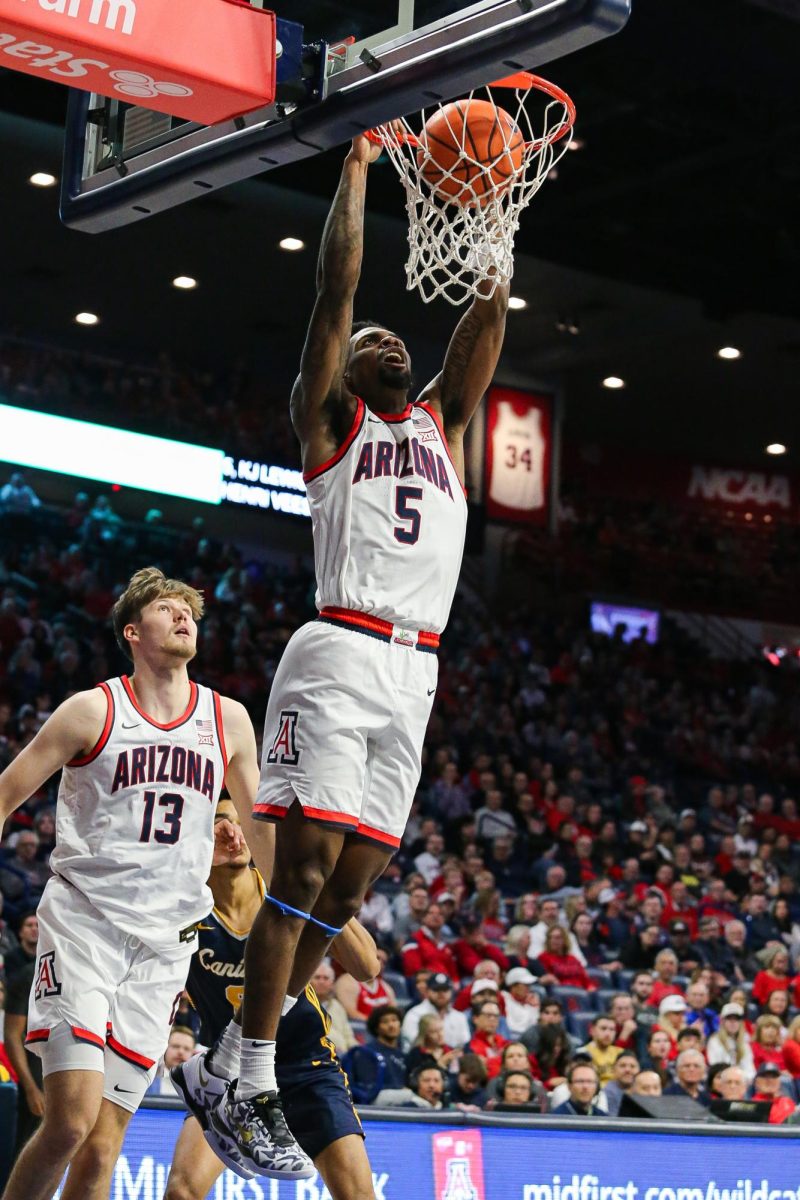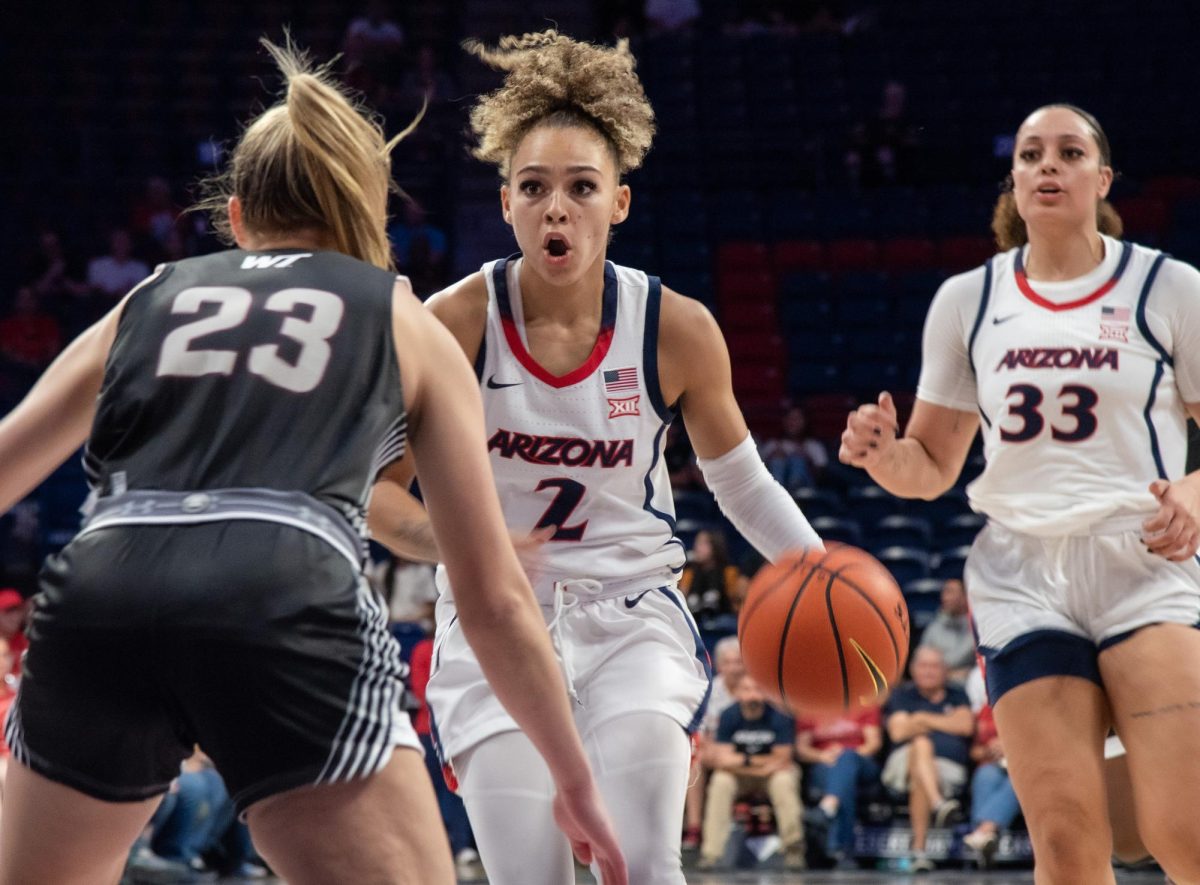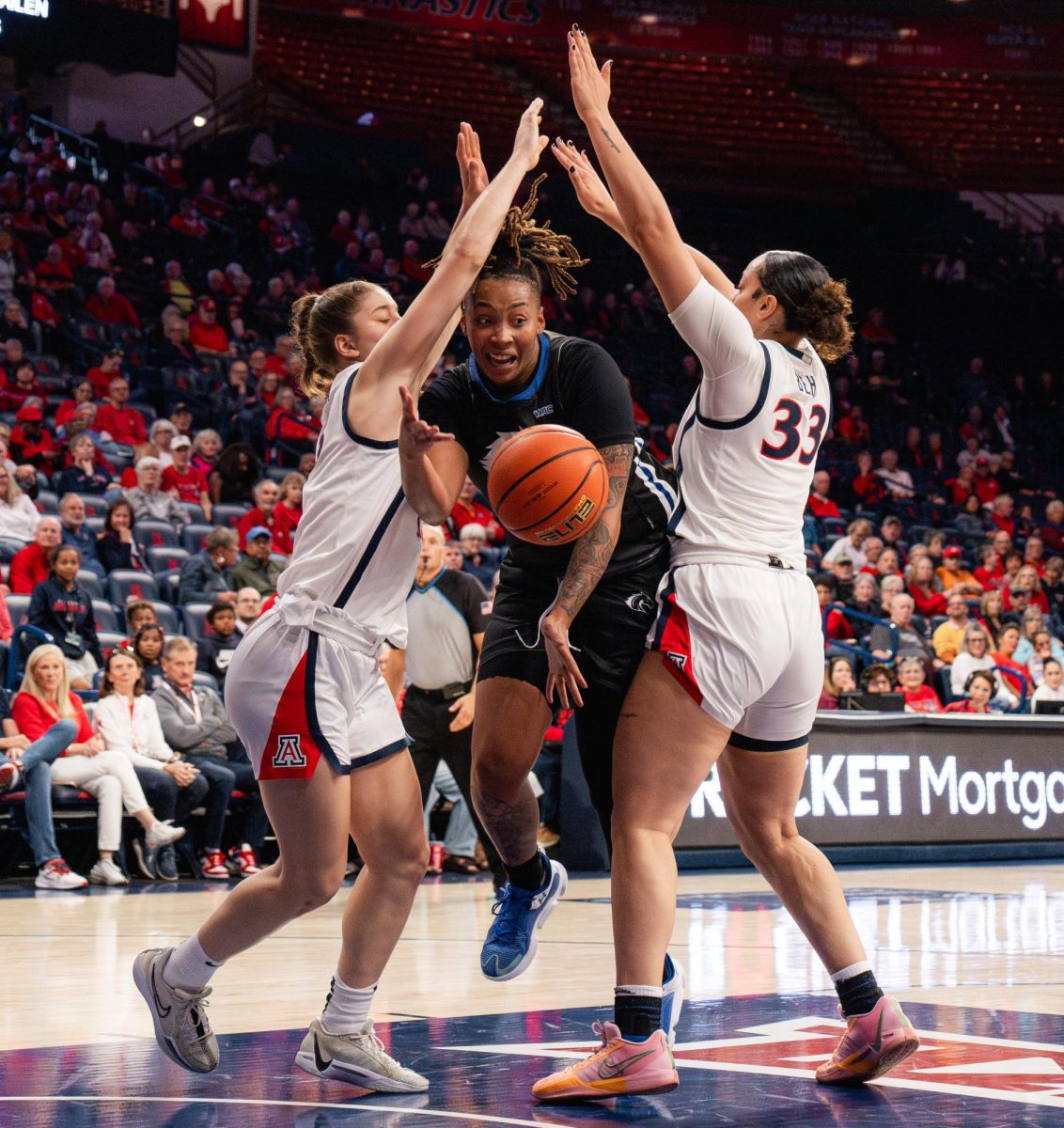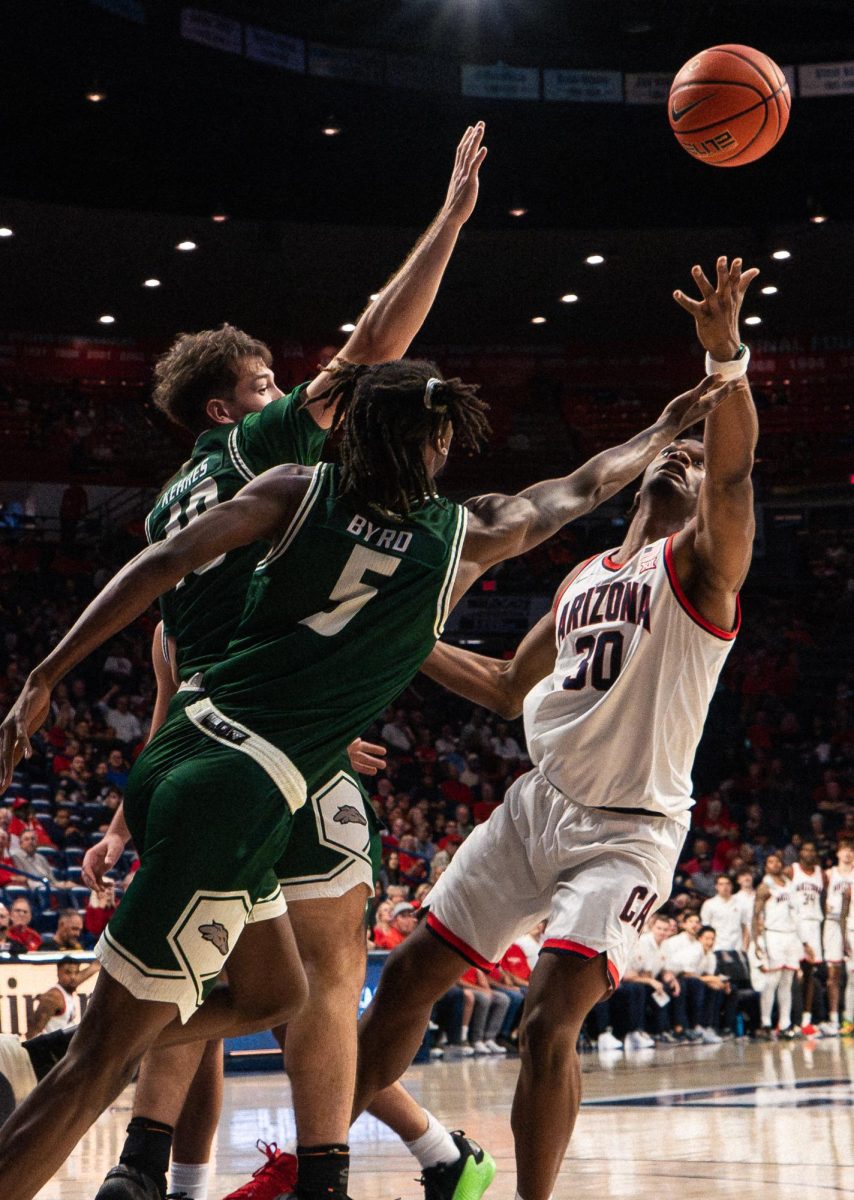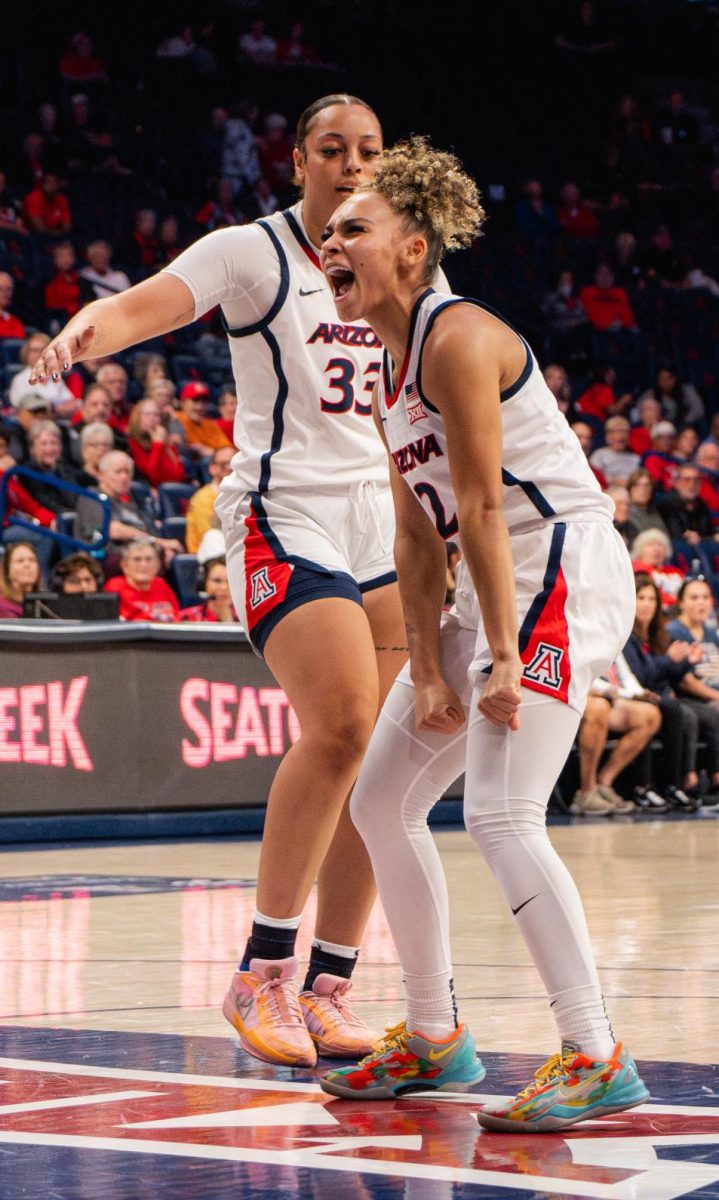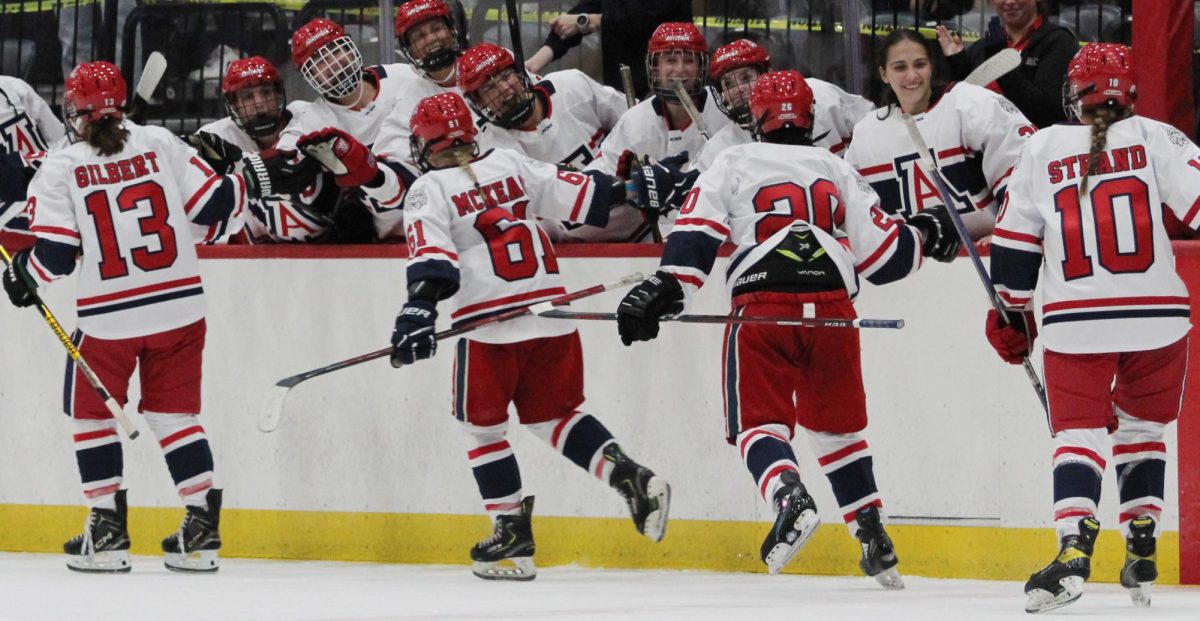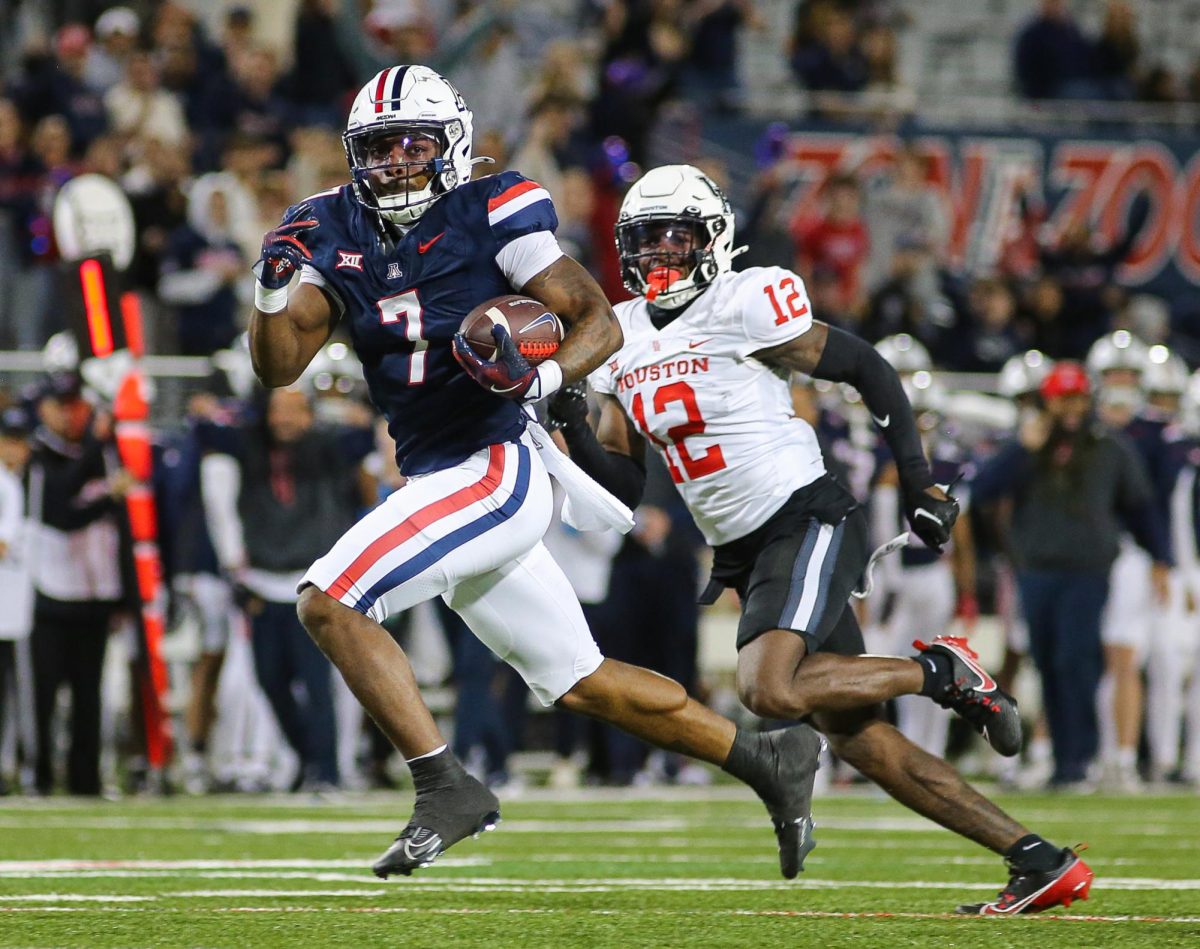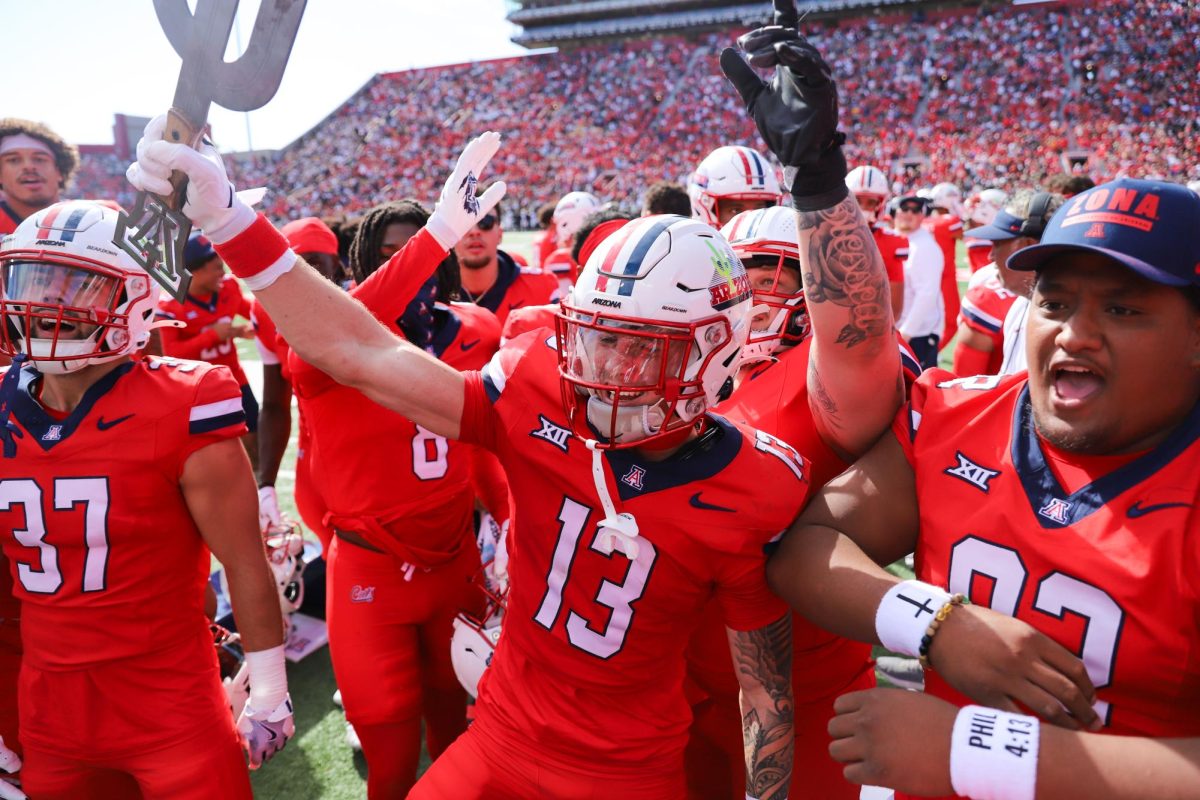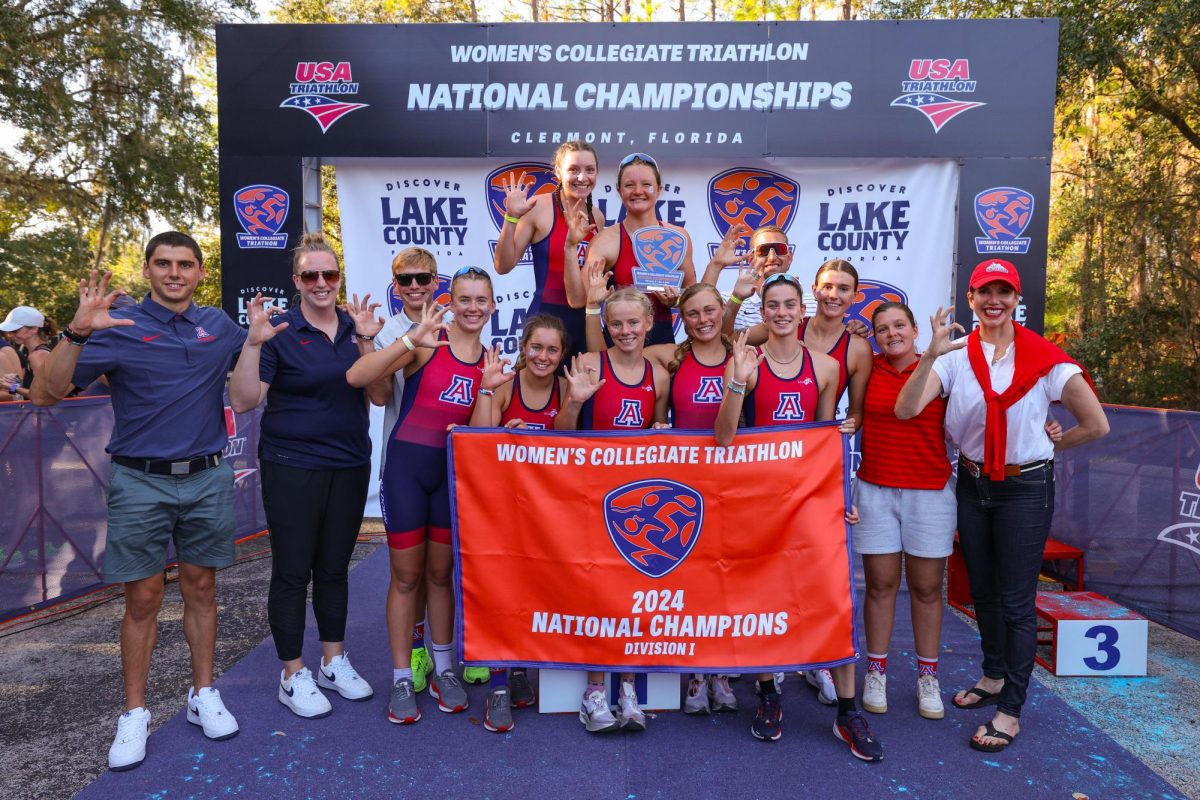Not many teams in college basketball needed a blowout win more Arizona.
The Wildcats’ 100-60 victory over Bryant University on Dec. 22 was the first time head coach Sean Miller has been able to relax this season. With about six minutes left, Miller started bringing in subs, and every player on the roster saw playing time — including the walk-ons.
“As a staff, as a team, as a coach, you just need a break and I don’t even think anyone needs a break more than us,” Miller said.
Led by veterans Solomon Hill, Kyle Fogg and Jesse Perry, the Wildcats struggled to pull away in wins during the beginning of the non-conference season, a stretch that Miller called “one of the toughest schedules in the country.”
After the win over Bryant, Miller said that if he were given a chance to do it again, he would have scheduled a game against a team similar to Bryant somewhere in the middle of the non-conference season.
Slow starts and an inability to close out the game were the norm for the Wildcats early in the season and it hasn’t been until just recently that Miller’s team been able to push the offensive pace to avoid a first-half deficit. Arizona finished the non-conference season with a 9-4 record, with three of the losses coming to teams now ranked in the top 25. Forward Kevin Parrom said the tough non-conference schedule was “good for the team” and prepared players for conference play.
Said Miller: “We’ve been in 14 hard-fought games. When you look at our schedule, sometimes we don’t get enough credit to play the teams that we’ve played. We’ve challenged ourselves but generally speaking moving forward there’s a lot of benefits to that.”
Here’s a look back at what Arizona learned in each of its non-conference losses:
Loss to Mississippi State in New York:
What happened: Arizona’s small lineup was exposed on national television as the Wildcats struggled to contain MSU’s Arnett Moultrie in the paint in the second half on Nov. 18. He finished with 19 points and 10 rebounds. This game was the first time the Wildcats struggled to control the tempo, which gave them problems as the game progressed, especially in the last 10 minutes of the game when the Bulldogs closed out with a 10-2 run.
What we learned: Arizona’s lack of size made stopping big men inside challenging and key stops late would prove to be crucial for the success of chipping away at opponents’ leads. It was the first time that dictating the pace of the game also appeared to be an issue for the Wildcats.
What Miller said: “As a defensive team you can’t pick and choose when to play hard. You have to play hard on every possession and we learned that tonight.”
Loss hosting San Diego State:
What happened: Arizona’s 22-game home court winning streak was snapped when the Wildcats lost to San Diego State in McKale Center on Nov. 23. The Wildcats went cold again from the field, falling behind 21-4 in the first half. Although Arizona was able to mount a comeback by halftime, the slow start and San Diego State’s 16-5 run in the second half were too much for the Wildcats to overcome.
What we learned: It was a combination of bad perimeter defense — the Aztecs shoot nearly 67 percent from 3-point land — and a lack of offense that doomed Arizona, which shot just 33 percent from the field. A lackluster defensive showing at crucial times allowed San Diego State to retain the lead throughout the game. Poor shooting and a “lazy” start was something that Jesse Perry said sucked all the energy out of the team. Miller said Perry and Hill’s efforts “were not enough,” showing the first indications that as Hill and Perry go, the Wildcats go.
What Miller said: “Offensively it wasn’t our night. Defensively when we needed the big stop they scored and they executed.”
Loss at Florida:
What happened: Although Arizona had the lead late, the Gators fought back to force overtime on Dec. 7. Defense down the stretch was a problem for the Wildcats, who let turnovers and key makes from Florida force the extra period. Due to the Gators’ size, Kyle Fogg and Hill fouled out in overtime. Hill scored just five points and his poor offensive showing was a serious hit to Arizona’s chances.
What we learned: Florida’s size was a problem again for the Wildcats, who were out-rebounded 47-35 and allowed 22 offensive rebounds. Although Perry scored 23 points, the game proved that individual efforts weren’t going to be enough to sustain the Wildcats throughout non-conference play.
What Parrom said: “As soon as we got back we learned that we’re a small team but we have to box out and rebound.”
Loss to Gonzaga in Seattle:
What happened: Gonzaga opened a 22-4 lead in the first 10 minutes of the game to once again expose the lack Arizona’s size and ability to control the tempo. The Wildcats would whittle the lead down to six points, but the Bulldogs held on for the win in Seattle on Dec. 17. Gonzaga’s Elias Harris lived in the paint and had 17 points in the first half and 25 in the game. Three other players, including seven-footer Robert Sacre, finished with double figures.
What we learned: Taking control of the tempo early was Arizona’s downfall throughout the non-conference season. A lack of consistent pace hurt the Wildcats’ ability to keep a balanced offense flowing through its veterans and spark chances for the newcomers. Arizona must continue to be flexible with their lineup in order to make up for their lack of size and presence in the post.
What Miller said: “We have to be consistent in playing fast. Gonzaga was the last lesson needed for that.”



